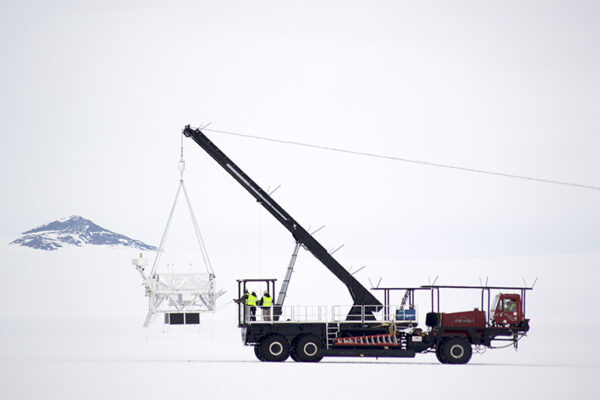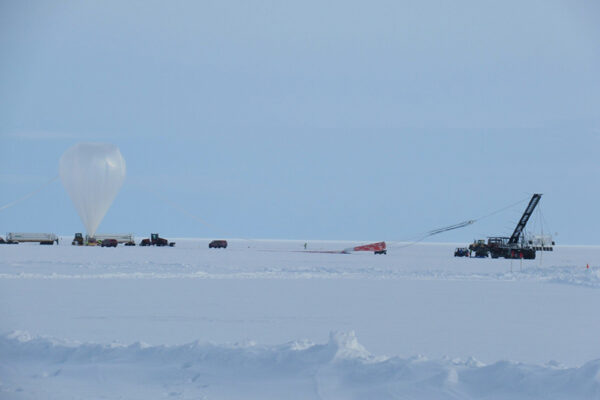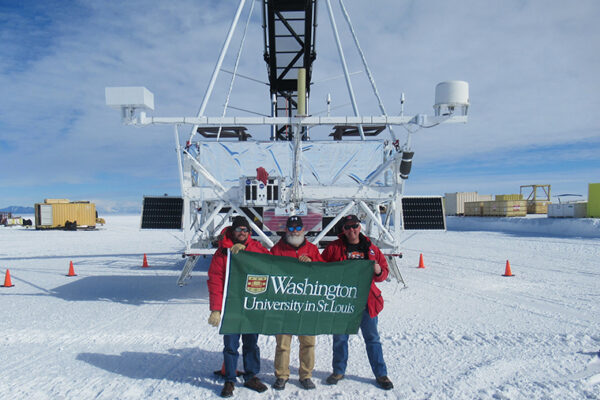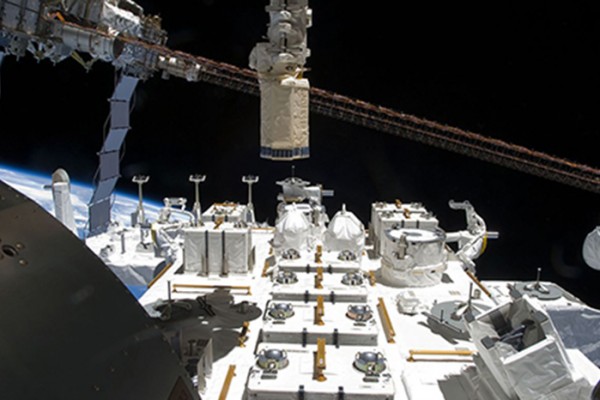Catching up with SuperTIGER, 130,000 feet above Antarctica
A balloon-borne scientific instrument designed to study the origin of cosmic rays is taking its second turn high above the continent of Antarctica three and a half weeks after its launch.
WashU physicists launch cosmic ray telescope from Antarctica
A team of Washington University in St. Louis scientists at McMurdo Station, Antarctica, successfully launched its SuperTIGER (Super Trans-Iron Galactic Element Recorder) instrument, which is used to study the origin of cosmic rays.
Cosmic ray telescope launches from Antarctica
Washington University in St. Louis announced that its SuperTIGER (Super Trans-Iron Galactic Element Recorder) instrument, which studies the origin of cosmic rays, successfully launched today from Williams Field at McMurdo Station in Antarctica.
High-energy observatory launches this week
On Wednesday, Aug. 19, at 8:15 a.m. St. Louis time, NASA TV will begin broadcasting the launch of a cargo container at the Tanegashima Space Center off the southern coast of Japan. In addition to water and spare parts, the cargo container will carry CALET, an astrophysical observatory designed to study the high-energy cosmos.
Super-TIGER shatters scientific balloon record in Antarctica
Over the holiday weekend, the WUSTL-led cosmic ray experiment Super-TIGER set a record for the longest flight ever made by a heavy-liftscientific balloon. Now aloft for 45 days, shattering the previous record of 42 days, it has recorded more than 50 million “events,” or hits by cosmic rays arriving from space. The scientists are ecstatic to have such a great balloon because the longer the it stays up, the more data they will collect and the more they will learn about the mysterious mechanism that accelerates these particles and sends them streaming across space.
Super-TIGER going for a record!!!
Super-TIGER the WUSTL-led cosmic ray experiment, has just been given the
green light for a third circuit around Antarctica. If the balloon stays up for a complete circuit it will probably break the heavy-lift scientific ballooning record of 42 days — and bring in a rich haul of data about cosmic rays, charged particles that continually bombard the Earth from space. The team has gone positively piratical over the prospect of more booty.
Super-TIGER stalks cosmic rays in Antarctica
Invisible high-velocity particles rain down on Earth day in and day out, but it has taken 100 years and clever deduction for physicists to figure out what they’re made of and where they come from. Although some details are still unclear, physicists have built a case that the cosmic rays are born in volleys of supernova explosions in OB associations, loose associations of hot, massive stars sprinkled throughout our galaxy.
Super-TIGER is up!!!
The Super-TIGER comic-ray experiment had a perfect launch Sunday 9:45 am New Zealand Daylight Time. The enormous balloon that will carry it to the limits of Earth’s atmosphere was stretched out on the ice and then partially
filled. As it
came up off the ice, the balloon rose over the downstream
instrument. When it was directly overhead the Boss released the two-ton cosmic-ray instrument and it was lofted effortlessly into the skies over Antarctica.
Rough guide to Super-TIGER watching
The word from Antarctica is that the polar vortex is setting up early this year and the balloon-borne Super-TIGER cosmic-ray experiment may be launched into the vortex any day now. Once the launch starts, web cams and a tracking map will go live at NASA’a Columbia Scientific Balloon Facility site Blogs and Twitter feeds are already providing a lively running commentary on the buildup to launch.
Washington University physicists are closing in on the origin of cosmic rays
Nearly 100 years after the discovery of cosmic rays, a new type of gamma-ray telescope is finally allowing physicists to make images of cosmic-ray nurseries.
View More Stories




